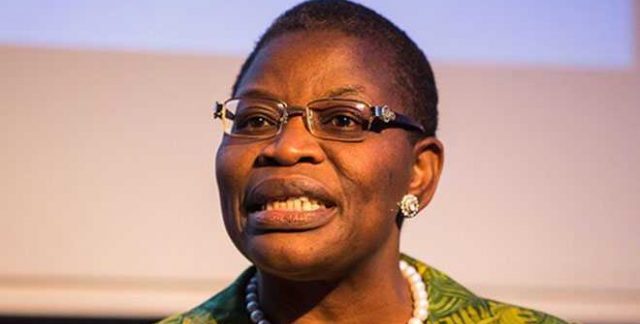Politics
Ezekwesili defends Obasanjo over $16bn spent on power projects without results

The claim that former President Olusegun Obasanjo’s administration spent $16 billion on power project has been refuted by former Minister of Education, Dr. Obiageli Ezekwesili.
Contrary to the $16 billion which the power project is said to have gulped without anything to show for it, Ezekwesili clarified that only about $3.5 billion was injected into the construction of new power generating stations under the National Integrated Power Projects (NIPPs) as at the time the tenure of the administration of Obasanjo ended in 2007.
Recall that President Muhammadu Buhari had recently told Obasanjo that he has questions to answer over what happened to the $16 billion power projects under his administration.
But speaking in Lagos at the weekend at a roundtable organised by the Shehu Musa Yar’Adua Foundation’s Oil Revenue Tracking Initiative (ORTI) and themed “Savings and Stabilisation Mechanism for Nigeria”, Ezekwesili claimed that all the additional electricity currently generated in the country today comes from some of the 10 brand new power stations built under the NIPP.
In her presentation on “Policy options on safeguarding and smoothening fiscal adjustments in Nigeria” at the event, Ezekwesili explained that the NIPPs were part of the success story of the Excess Crude Account (ECA) created by the Obasanjo’s government.
Noting that Obasanjo chaired the committee that approved special intervention for the power sector after ECA was created, she added that the special intervention for the power sector identified “some key artery points across the country, where there would be a deliberate development of the capacity to generate power.
She said, “So, you have things like Papalanto (the 676MW-capacity Olosunsogo II Power Plant built in Olorunsogo in Ogun State by SEPCO III Electric Power Construction Corporation of China); Geregu (the 434MW capacity Geregu II Power Station built in Ajaokuta, Kogi State, by Siemens Nigeria Limited); Alaoji (961MW-capacity Alaoji Power Plant built by Rockson Engineering in Abia State) and other power stations in at least 10 locations. It is from out of these projects that whatever power that anybody is generating today comes from.”
According to the former Education Minister, it was from the ECA that the Central Bank of Nigeria (CBN) raised Letters of Credit directly for these projects.
“I do recall that even as Vice President at the World Bank, from what the federal government made available as at that time showed that as at 2007, $3.5 billion had gone into these NIP projects. So, when I see sometimes, figures that get bandied around, I say part of the culture we must have as citizens is to say that whenever figures show up, we must interrogate them. We need to have a habit to interrogate data, otherwise they will be part of the political rascality of not wanting to be accountable to the society,” she explained.
She said that the ECA was so successful that Obasanjo’s government had to also from it paid $12 billion to take down the stock of its foreign debts.
She added, “People still argue whether it was sensible for us to spend that amount of money to take down the stock of our debt. But I need to tell you that it was a good thing that we took down the stock of our debt. It was an important thing to do because without taking down the stock of our debt, we were not going to be admitted into the global financial system.”
READ ALSO : Presidency attacks Obasanjo again, lists ‘sins’ of his govt
Ezekwesili then said that the high oil prices recorded six years after the tenure of Obasanjo could have built up foreign reserves to as much as $100 billion, including an ECA level of at least $40 billion.
“The summary of the inflows and outflows from the Account shows that the opening balance was $4.56 billion in 2011 and reached a peak the following year at $8.7 billion before declining to $2.3 billion in 2013. The balance as at May 2015 was $2.07 billion,” she said.
She quoted a recent comment by a former Minister of Finance and Coordinating Minister for the Economy, Dr. Ngozi Okonjo-Iweala, at the 2014 World Economic Forum, that “the depletion of the Excess Crude Account to about $2.5 billion has made the country more vulnerable than it was in the past and put the economy of the country at great risk,” to buttress her point.
RipplesNigeria… without borders, without fears
Click here to join the Ripples Nigeria WhatsApp group for latest updates.
Join the conversation
Support Ripples Nigeria, hold up solutions journalism
Balanced, fearless journalism driven by data comes at huge financial costs.
As a media platform, we hold leadership accountable and will not trade the right to press freedom and free speech for a piece of cake.
If you like what we do, and are ready to uphold solutions journalism, kindly donate to the Ripples Nigeria cause.
Your support would help to ensure that citizens and institutions continue to have free access to credible and reliable information for societal development.




















